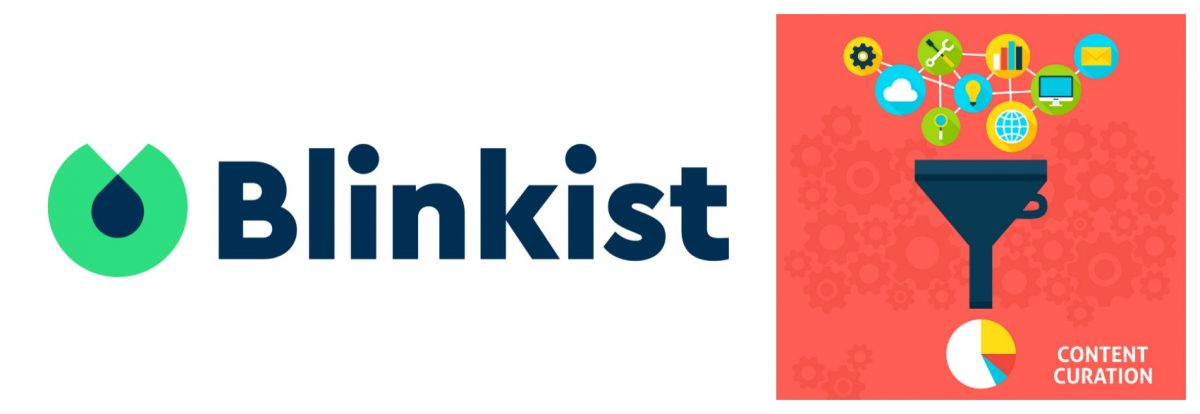A couple of months ago a good friend of mine asked me:
what would you do if you knew that you will die in a year from now?
It took me days to come up with an answer [a real one]. Among the many things I told her I would do, there is one that has a lot to do with the discovering Blinkist in my recent past.
One of the things I’d definitely do, would be hiring a full time personal curator [a curator of everything]. Someone who’d choose the blinks of every topic interesting to me and who would give me those blinks already filtered [after all, I only have a year]. I thought about books, but also I meant articles, podcasts, videos, and courses in the form of micro capsules showing just the highlight or the piece of knowledge I really wanted or needed.
I was thinking on total and complete curation!
Curation
I am a learner, a real deal learner. I love it and it defines me. But I suffer, like most of us, of the limited time this busy life has become more and more about. So, I have realized how critical curation is and the difference it can make in our life. As a professional of the L&D field, I see curation as a tool, process and skill that becomes every day more important. Or at least it should be.
Relevance of curation for the L&D
According to the IDC,
the average employee spends about 9.5 hours per week hunting around for information before finding what they need.
Curation is an effective answer to reduce efficiently such hunting-time. Karla Gutiérrez says curation is a way to read through mountains of irrelevant information to find what the learner really needs.
I have started to do some personal curation experiments. Some of the emails I send to friends and colleagues asking me for a recommendation on where to dig deeper on a certain topic, go something like this:
Hey Charles,
Regarding our chat the other day about very different topics, as agreed I am sending you a couple of recommendations to learn more about them:
About pricing:
- See the pages 11-17of the Simon&Kutcher reportin attach.
- Listen to X Episode of “Open for Business”. And if you are in a hurry listen only from minute 3.20 to 7:46.
About Holocracy:
- There is this amazing book called “Reinventing Organizations” which is I believe the best source for this topic so far. It is long though. However there is a graphic version of it that will give you the highlights in a very easy to spot way. If you have only 30 minutes for, read pages 64 to 67, 77-81 and 101-106.
- See the movie Design & thinking to see how some companies work on this scheme. At least see minutes 33:00 – 45:20.
Great talking to you man. Hope this helps!
[Cool don’t you think? To be honest, I would pay for having someone doing this kind of thing for me].
We need to curate content more often, almost like a habit. Bersin by Deloitte says that
content curation is both an art and a science.
It is not just about selecting and displaying information. Curation deals with identifying the most relevant information for a specific group of target audience and contextualizing and organizing it before presenting it to them. For instance, let’s see the email I sent to my friend Charles. I did not send random content. I knew what he was looking for. I read about it, and I sent him different sources [in different formats] with the info Charles required to address his needs and pains.
In a way, that’s what we need to use curation in L&D to make of it an active and positive tool integrating it to the learning design and strategy. Banner mentions in this article that content curation has become an integral part of the learning experience design process. And I think that its importance will increase as time goes by in this digital age.
As David James (Chief Learning Strategist with Looop) says curation «is an approach and skillset for L&D to feed the appetite employees have for information, insights and tools by bringing the best of the web to them. Done well, L&D have the opportunity to impact every day performance taking just a few minutes but making a big difference».
Do you want to know how to be a curator or how to curate content [at the office or at your life]? Well, I will tell you how in the next post.
So, what do you think?
How do you curate content on a daily basis? How useful is it for you?
Please, share this article or send it to a friend or colleague you think may find it useful. There is always someone.
 Diego is an experienced learning advisor, a certified trainer and a design thinking consultant.
Diego is an experienced learning advisor, a certified trainer and a design thinking consultant.
He is available for advisory where the focus is on driving transcendental learning and lasting change. Moreover, he is always eager to chat.





